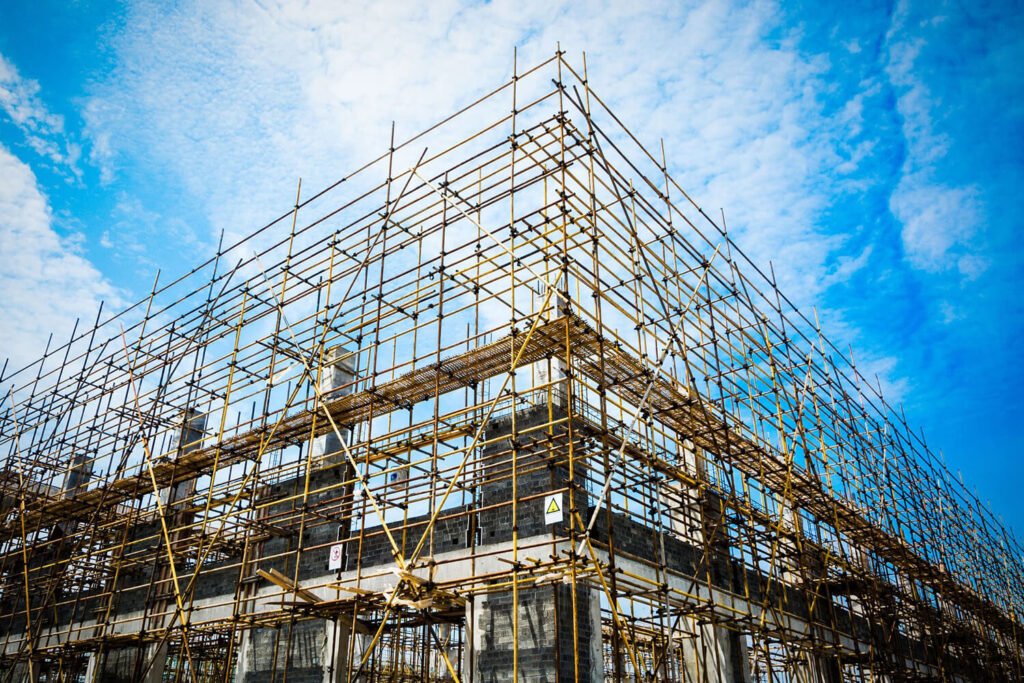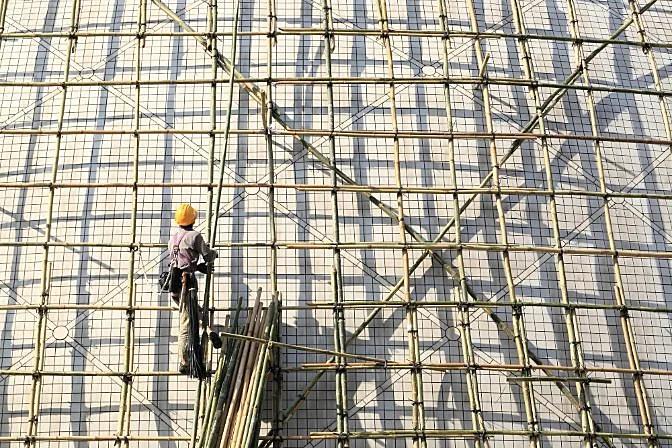Checking Out the Different Kinds Of Scaffolding Used in Building Jobs
The building and construction market relies heavily on various types of scaffolding to fulfill certain project demands, each offering distinct benefits and applications. Traditional framework scaffolding supplies a strong foundation for basic jobs, while suspended scaffolding is crucial for work on skyscraper structures.

Conventional Framework Scaffolding
Conventional structure scaffolding is among the most extensively used techniques in the building market because of its toughness and adaptability. This system contains vertical and horizontal frameworks that are set up to produce a steady platform for materials and workers. The main components include vertical blog posts, straight ledgers, and angled dental braces, which with each other offer a solid structure that can sustain substantial lots.
One of the key benefits of standard framework scaffolding is its versatility to various building and construction jobs, ranging from household buildings to huge commercial frameworks. The modular design enables simple setting up and disassembly, making it effective for both short-term and long-lasting jobs. Additionally, the system can be personalized in height and width, fitting various building designs and website problems.
Safety is paramount in scaffolding applications, and standard framework systems are furnished with guardrails and toe boards to avoid falls and ensure employee security. Normal evaluations and adherence to security guidelines are crucial in maintaining the integrity of the scaffold (Scaffolding). On the whole, conventional framework scaffolding remains a fundamental choice in the building and construction sector, giving a dependable system for labor and boosting general task efficiency

Suspended Scaffolding
Put on hold scaffolding offers an one-of-a-kind service for construction jobs that call for access to raised surface areas, particularly in scenarios where typical framework scaffolding may be impractical. This sort of scaffolding is commonly put on hold from the roofing system or top levels of a structure, making use of a system of systems, ropes, and sheaves to develop a working room that can be changed to numerous heights.
Among the primary benefits of put on hold scaffolding is its flexibility. It can be conveniently repositioned or decreased to accommodate adjustments in construction demands, making it suitable for tasks such as home window installation, frontage work, and upkeep on skyscrapers. Additionally, the very little impact of put on hold scaffolding permits much better use of ground space in city settings, where space is often restricted.
Safety and security is a crucial factor to consider in the use of suspended scaffolding. Overall, suspended scaffolding provides a effective and reliable service for accessing hard-to-reach areas in various building circumstances, improving both efficiency and security on site.
System Scaffolding
System scaffolding, often regarded as a modern solution in the scaffolding industry, includes pre-engineered parts that can be swiftly set up and adjusted for different building and construction jobs. Scaffolding. This kind of scaffolding is characterized by its modular design, which permits flexibility and efficiency on job websites, suiting various heights and structural needs
Normally made from high-strength steel or aluminum, system scaffolding offers boosted durability and security. The parts include vertical blog posts, horizontal ledgers, and angled braces, which adjoin safely, ensuring a durable framework. The design usually integrates standard fittings, streamlining assembly and disassembly procedures, thus reducing labor time and expenses.

Rolling Scaffolding
Moving scaffolding is a functional option to typical fixed scaffolding, created for movement and ease of usage on building and construction sites. This kind of scaffolding consists go to this site of a system supported by frameworks with wheels, enabling workers to easily relocate it as required. The wheelchair function dramatically boosts efficiency, as it lessens downtime related to disassembling and constructing taken care of scaffolding.
Commonly constructed from lightweight materials such as light weight aluminum or steel, rolling scaffolding provides a sturdy yet mobile option for projects calling for regular repositioning - Scaffolding. It is particularly useful in tasks such as painting, drywall setup, and electrical job, where access to various elevations and places is essential
Security is critical in rolling scaffolding design, with features such as securing wheels to stop unplanned motion when being used, and guardrails to protect employees from drops. Additionally, numerous models about his are flexible in elevation, fitting numerous task demands.
Cantilever Scaffolding

The layout of cantilever scaffolding commonly involves using arms or braces secured to a structure or structure, enabling the platform to expand exterior securely. Security is critical; thus, these scaffolds must be crafted to stand up to different tons and environmental problems. Regular examination and upkeep are necessary to make certain architectural integrity and worker safety.
Cantilever scaffolding is favored for its flexibility and efficient use area, making it a preferred option in metropolitan environments where room restrictions prevail. Moreover, it promotes simpler access to high altitudes, ultimately adding to the overall performance of building projects. Just like all scaffolding types, appropriate training and adherence to safety and security requirements are vital for employees utilizing cantilever scaffolding.
Final Thought
Conventional frame scaffolding supplies stability, while suspended scaffolding supplies versatility for elevated tasks. System scaffolding helps with quick assembly, and rolling scaffolding improves wheelchair for varying work atmospheres.
Standard framework superior scaffold service scaffolding supplies a strong foundation for general tasks, while suspended scaffolding is essential for work on skyscraper frameworks.Moving scaffolding is a flexible option to conventional fixed scaffolding, developed for movement and ease of use on construction sites. As with all scaffolding kinds, correct training and adherence to safety and security standards are important for employees using cantilever scaffolding.
Conventional frame scaffolding gives security, while suspended scaffolding offers versatility for raised jobs. System scaffolding assists in quick assembly, and rolling scaffolding boosts flexibility for varying work settings.